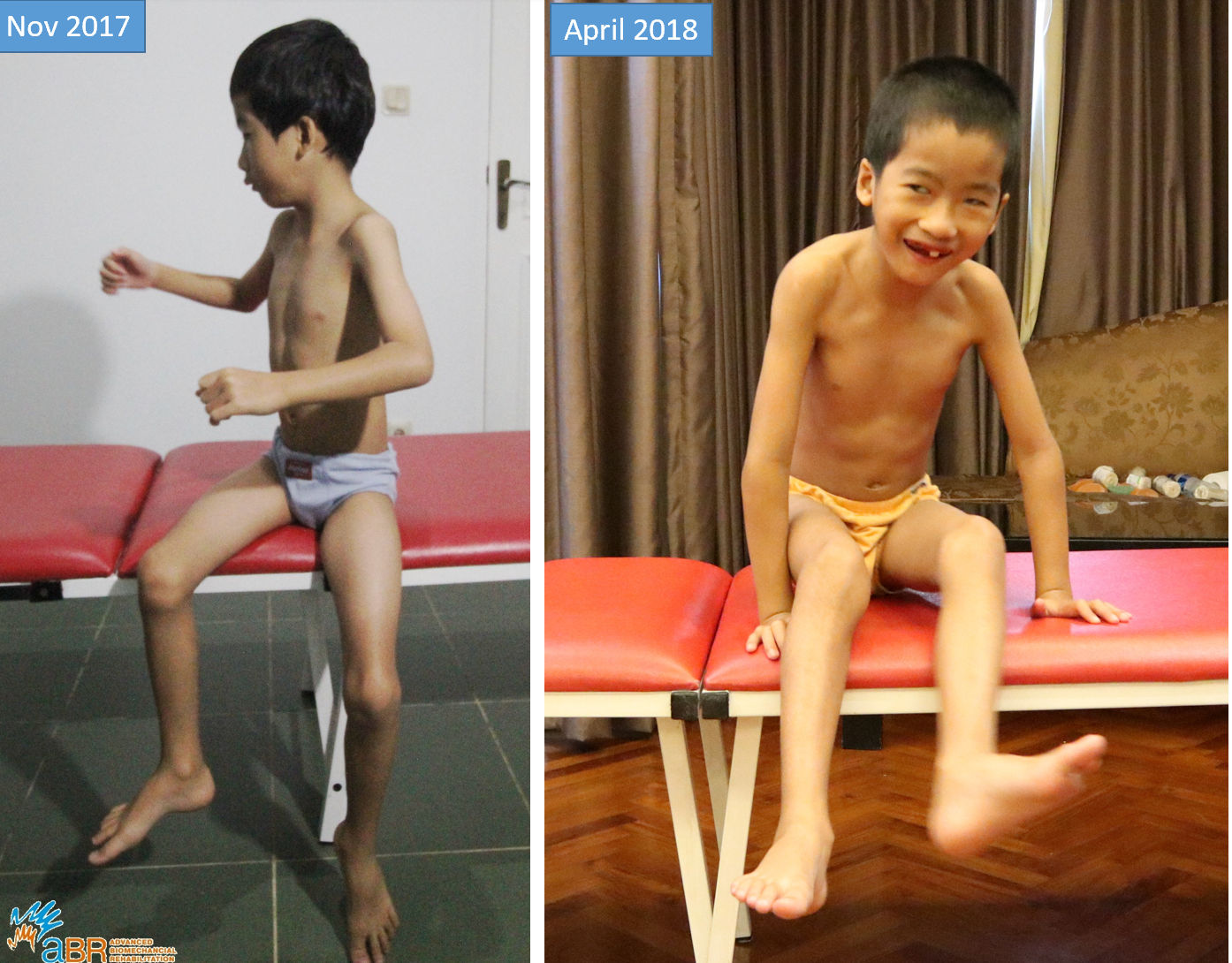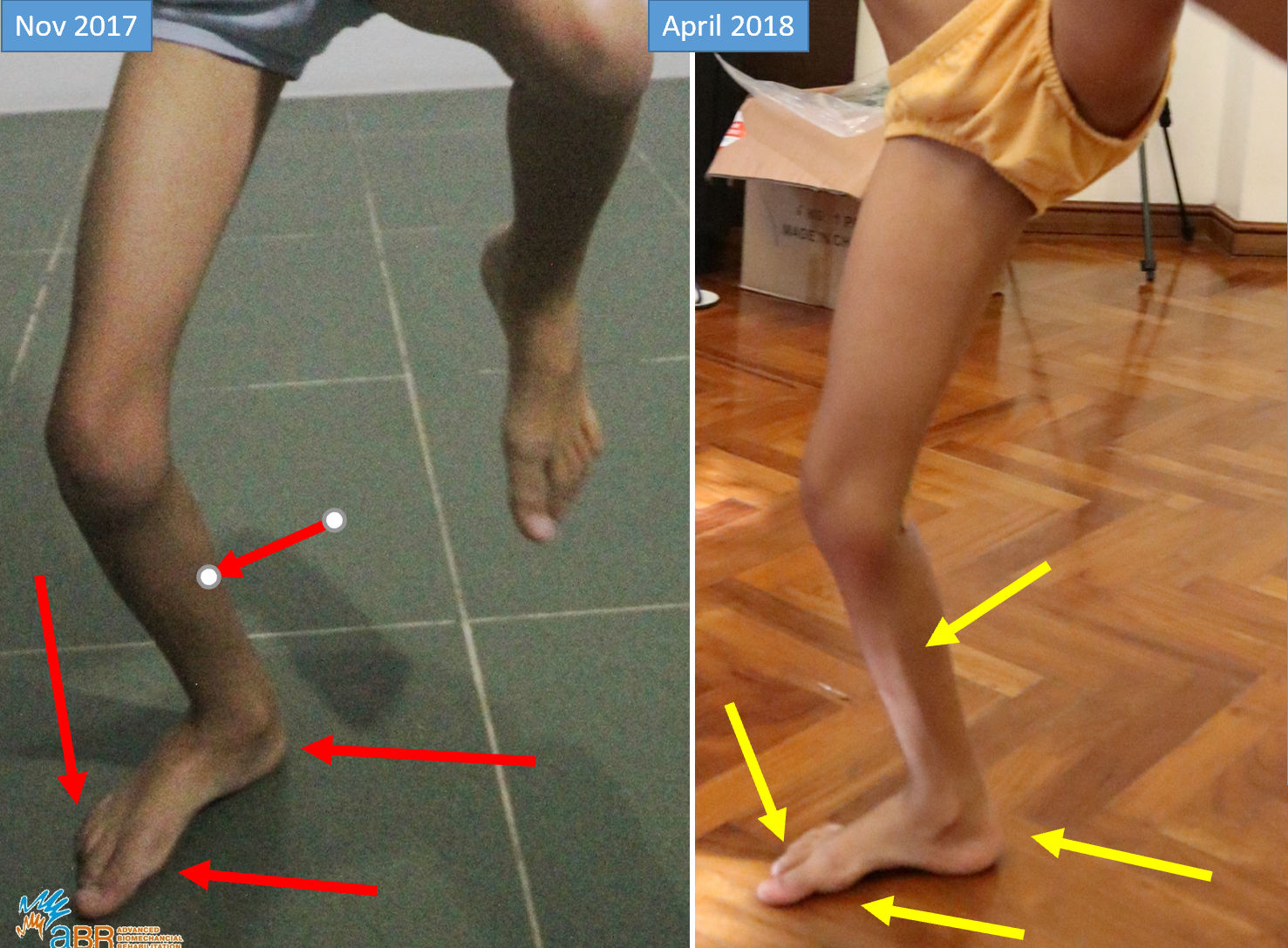When this boy first came to see us in Nov 2017, his demonstration of his high motor intelligence in walking was very clear. He constantly used his arms and his legs to help with his balance and coordination because his balance and coordination were not good.
Our first goal is to improve his fundamentals for walking. The primary target was his hands and feet. Since they were not as active as they should be, they were poorly represented in the entire central nervous system (CNS), affecting his coordination. Hands and feet have the greatest number of mechano-receptors and were therefore the most obvious target for ABR work. Because of their poor connection and poor ability to respond to the CNS, they stay pretty much dormant and inactive.
Because this boy is also hyper active, it is challenging for his mom to work on him. Her daily average was about 20 mins of work, which was not done in single session but was done in several sessions of whatever length of time she was able to do. In other words, her work was done on opportunity basis - whenever opportunity presents itself. However, his hands and feet had wrap exercises on before bedtime so that he can sleep with them through the night. 4 months of work on his hands and feet has reactivated them for mobility.
Besides the improved body map, work on arms and feet also establish an ascending line of development from the limbs towards the trunk, with development of limbs as leader. As a result, the improved hands and feet improves the core structure including the head, the shoulder, the trunk and the pelvis.
The change has been impressive. The summary of the overall progress can be seen in the following video:
Improvement in the shoulder girdle, pelvis girdle and spine are key elements behind improved walking. The change in their fundamentals are listed as below:
1. Improved balance coordination - as a result, there is a reduction in reliance on his arms for balancing. His arms and hands are more naturally placed in relaxed position
2. Improved lower abdomen pubic triangle (width of anterior pelvis) - the legs are rotated inwards, Note how the face of his knee changes from facing outwards to now facing forwards.

3. Achieved his ability to scoop his bum and move his entire body sideway - This means stronger arms, stronger abdomen, and pelvis.

4. Improved flexibility of the spine translates to improved ease of bending forward:

5. Toes are no longer curved and pressed while walking. He also walks more on the lateral side (outer side of foot) instead of the medial side (inner side of foot) of the foot. 4 months ago, his entire medial shows lines of compression. His shin begins to show signs of strain as a result of 'windlass effect' and the traveling path of ground reaction moving from the calf to the shin. All these show improved 'windlass effect'.

If you are interested in knowing more about what causes the postures and movement disorder, and what ABR can do for your child, we will be holding an open house in Perth and Sydney soon! You can find out about the soonest Open House here:
Should you have any other questions, please write to Sarah at This email address is being protected from spambots. You need JavaScript enabled to view it. or This email address is being protected from spambots. You need JavaScript enabled to view it., you can also whatsapp call Sarah at +6591889017 (whatsapp call is free. Just download the app to your mobile phone).